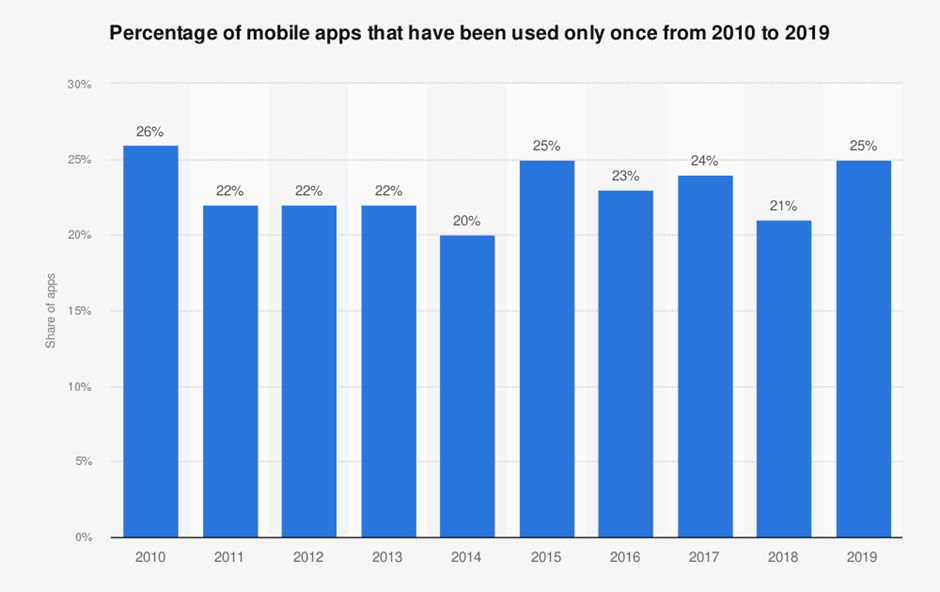
Innovative Ways to Enhance User Experience in Mobile Apps
- | June 4, 2025

Introduction
The Great Wall of China was built to stop attacks and invasions on China’s northern border. Historically, it has been the site of multiple battles between the Chinese dynasties and various other nomadic groups, including the Mongols. Over centuries, rulers recognised the seminal importance of this wall, and it was built, dismantled, rebuilt, and expanded to protect their territories.
Today, we look at this great architectural marvel with absolute wonder and amazement. But what if we stripped away the architectural marvel and wonder of it, leaving it with just the utility it offers? Would that change anything?
Probably not!
In life, some things are so essential that people find them useful no matter what!
However, in a world where thousands of mobile applications are released every day, with more than 3 million apps available in Google Play itself, usefulness alone might not be enough to make an app stand out.
The process of building an app should begin by asking three fundamental questions: First, does it make life easier or better for the user? Second, is it easy to use? And third, does it look good?
If the answer to all three questions is yes, the app is off to a good start vis-à-vis User Experience (UX). In this blog, we will discuss innovative ways to enhance User Experience in mobile apps.
What is User Experience? Why is it Important?
User Experience (UX) in mobile apps is a broad term that refers to how users interact and experience an app. UX design involves creating products that deliver “meaningful experiences,” that include various aspects such as “branding, usability, functionality, and design.” As the quality of interaction with an app is often intangible, creating exceptional User Experience requires designers to have not only high-quality data but also deep empathy.
Apps exist in an extremely competitive marketplace. However, the opportunities for these apps to contribute to people’s lives are also limitless. According to the State of Mobile 2024 report published by data.ai, 257 billion new apps were downloaded in 2023, with over 489,000 apps downloaded every minute! Last year alone, mobile ad spending reached a whopping 362 billion USD. Needless to say, the User Experience associated with a mobile app is central to tapping into this vast ocean of opportunity. The essence of this has been perfectly articulated by none other than Steve Jobs himself: “You’ve got to start with the customer experience and work backwards to the technology.” For designing an app with User Experience at the centre, the developer must deeply understand its customers. Indeed, knowing customer pain points well and understanding the gap between demand and supply are essential for creating an app that not only meets but also exceeds user expectations.
Follow AKW Consultants on WhatsApp Channels for the latest updates.
Enhancing User Experience
Although published long back, Peter Morville’s User Experience Honeycomb still provides a comprehensive framework for enhancing User Experience and can serve as a reference even at the initial stages of design conception.
Once a mobile app is developed, the following innovative ways could help in enhancing the User Experience:
1. Setting Expectations
Expectations about an app are often set before it is downloaded. If these expectations are too high, users may feel let down even if the app is reasonably useful. Setting unrealistic expectations that the app cannot meet creates a trust deficit in the User Experience that is very hard to overcome later. Branding and marketing should accurately reflect the app’s capabilities to ensure that user expectations are aligned with what the app offers.
2. Smooth Onboarding
It is essential for new users to clearly understand an app right from the very beginning. If users can easily navigate the app and find its content useful and engaging, they are more likely to appreciate its value. With about 25% of apps being used only once, and this trend not changing significantly over a decade, ensuring a smooth and informative onboarding process is essential to develop a loyal and active user base.

Source: Localytics; Business 2 Community, Statista 2024
3. User Interface (UI)
A clutter-free user interface and simplicity in design often enhance the User Experience. If an app can be accessed smoothly, without complications or distractions, it tends to be more comfortable for the user. Intuitive apps that do not require explicit instructions for navigation are often preferred by customers. Employing material design and a colour palette that creates a contrast to enhance readability can also significantly improve the User Experience. It’s important to remember that personal preferences are often unconscious. Analysing user data can reveal some of these preferences, which can then be used to refine the UI and enhance the overall experience of using the app.
4. Organisation of Information
The information in a mobile app should be organised in a way that aligns with the user’s needs and expectations. This ensures that users can easily find what they are looking for, enhancing their overall experience with the app. Proper organisation of information can greatly enhance an app’s usability as well.
5. Personalisation
The customers are not a monolith; each one has different needs and preferences. Therefore, the first step towards personalisation involves segmenting customers to send appropriate messages to the users. As more information is gathered over time, recommendations can become more personalised. Understanding how long consumers engage with the app, which features they prefer, who they are as individuals, and what choices they make is essential for creating a customised experience that makes users feel valued. An effective method for gaining this understanding involves using demographic, psychographic, and behavioural data.
6. Continuous Development
By engaging with users, the pain points in their experience can be better understood. Enhancing User Experience significantly depends on refining an app’s functionality through continuous improvement. Adapting to the changing needs of its users also ensures that the app remains useful and engaging over time.
7. Fun
Regardless of what the app is designed for, adding elements of fun greatly improves how much users engage with it. Features such as engaging graphics, interactive elements, or enjoyable content can make the app a pleasure to use. We love to come back to things that make us feel better. And hence, fun is an important ingredient in enhancing the overall User Experience.
Conclusion
Retaining a user is challenging, especially given the extensive choices available to serve their needs. Identifying an unmet demand and addressing it before competitors can be a great way to create a loyal base early on. We must also understand that user needs continuously evolve, and therefore an app that is absolutely essential now can become redundant within a few months. Research from AppsFlyer shows that more than half of all downloaded apps are uninstalled within the first thirty days, with nearly half of them being uninstalled on the very first day itself. Business of Apps reports that the average 30-day retention rate for Android apps is only 2.59%. However, if a user finds value in an app, they are more likely to continue using it. It has also been found that about 90% of users who engage with an app weekly are likely to become long-term users. To achieve this level of sustained engagement, enhancing the User Experience of the mobile app is possibly the most important tool available to organisations.
Learn how AKW Consultants can assist you create a user-friendly app tailored to your company’s specific needs and help your business stand out and grow in the process.
Read Also: AI Regulations: Balancing innovation and compliance


